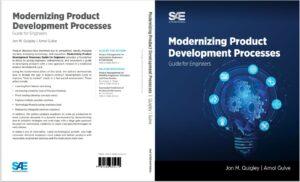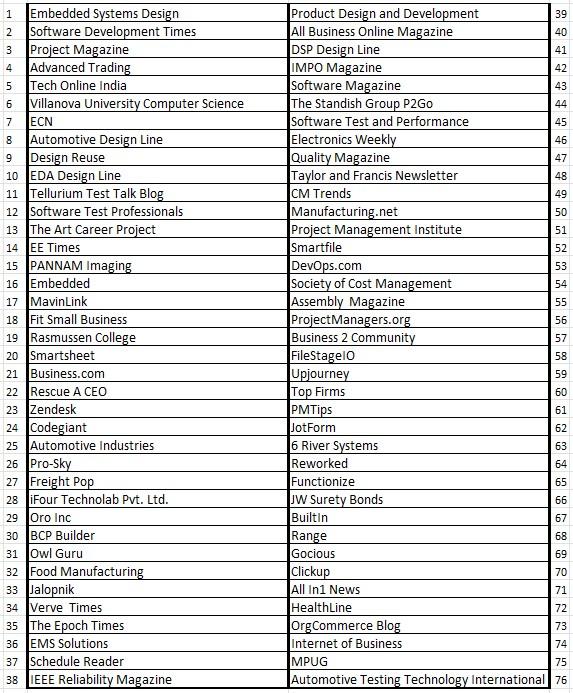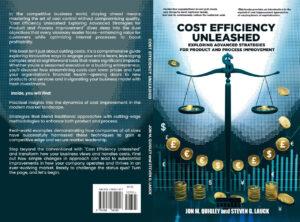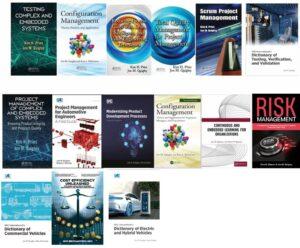Managing Component Transitions in Manufacturing: From Engineering Change Request to Material Disposition
Jon M Quigley
Change is inevitable, including in the manufacturing industry. Whether it’s for cost reduction, supplier updates, design improvements, or compliance requirements, moving from one version of components on a manufacturing line to another is a critical process that must be carefully controlled to protect product quality and continuity.
The process begins with the Engineering Change Request (ECR) and ends with the effective disposition of surplus or obsolete inventory. Throughout this journey, manufacturers must strike a balance between speed, cost efficiency, and quality assurance to prevent failures that can disrupt operations. By the way, it does not matter whether it is an ECR or an Engineering Change Note (ECN); the rules are the same. This might seem trivial or a fundamental thing in product development and launching to manufacturing. (I almost wrote launching ON manufacturing, like a missile, which can frequently appear from experience). Even when consulting for long-standing organizations outside the automotive sector, we have observed these deficiencies for over 30 years. So why is it this way? Does it even matter why? It just is. We can reduce the occurrence and the severity if we pay attention to the details and, more importantly, ensure relevant parties are included.
We may write a bit more on this topic, specifically when to generate the ECR, and changes to part, part number, and revision level.
 The Role of the Engineering Change Request (ECR)
The Role of the Engineering Change Request (ECR)
The ECR is the formal document that identifies the need for change and initiates the evaluation process. It contains details on:
-
The affected part numbers and assemblies (where the previous part is used and needs to be substituted).
-
The reason for the change (obsolescence, functional improvement, supplier change, specification update).
-
The impact on form, fit, function, and testing requirements (we also consider process changes or questions regarding quality, such as a new supplier).
-
A cross-functional review and approval process.
Once approved, the ECR transitions to an Engineering Change Order (ECO), providing authorization for implementation and communication across production, quality, supply chain, and customer-facing departments. I wonder if the lead word, ‘Engineering,’ leads the participants (I so want to say ‘combatants’ here) to believe that the only member of this team is engineering. That is absolutely wrong.
The Typical Players
The typical players involved in an Engineering Change Request (ECR) or Engineering Change Notice (ECN) are cross-functional stakeholders essential for practical evaluation, approval, and implementation of changes in manufacturing. Key participants usually include:
-
Product Engineering/Design engineers: Responsible for proposing, reviewing, and detailing technical changes.
-
Manufacturing/Production engineering: Assess feasibility and impact on manufacturing processes, tooling, and workflow.
-
Quality assurance/Quality control: Evaluate risks to product quality, compliance, and regulatory requirements.
-
Supply chain/Purchasing/Procurement: Analyze effects on supply continuity, cost, and sourcing requirements.
-
Operations/Plant Management: Oversee implementation, resource allocation, and adjust production schedules as needed.
-
Maintenance and Service: Determine impacts on long-term support, repairs, and part compatibility.
-
Document control/Configuration management: Manage updates to documentation, BOMs, version control, and communication.
-
Sales/Customer Service: Communicate changes and timelines to customers, and address any feedback or concerns.
-
Product owner/Project manager: Lead the change process, facilitate communication, and ensure objectives are met.
These roles collaborate to generate the content of the ECR, plan the introduction date, and consider the manufacturing implications and disposition of materials. This process begins with the design, review, approval, and execution stages, helping ensure smooth and controlled engineering changes in manufacturing.
 Options for Disposition of Material on Hand
Options for Disposition of Material on Hand
When moving to a new version of components on a manufacturing line, material disposition becomes a key decision point. Options generally include:
-
Use As-Is: If the old version has no impact on safety, regulatory, or performance compliance, existing stock may be consumed until it is depleted.
-
Rework or Modify: Some components can be re-machined, reprogrammed, or retrofitted to meet new requirements.
-
Return to Supplier: Vendors may accept returns for credit or rework.
-
Scrap: When obsolete material cannot be reused or modified, scrapping ensures it does not re-enter the production cycle.
-
Segregated Use for Service Parts: Legacy components can be reserved for aftermarket repair and service obligations.
-
Sell to Secondary Market: In rare instances, obsolete components may be transferred to non-competing industries.
Typical Failures During Component Transitions
Despite planning, several recurring failures occur when shifting from one version of components on a manufacturing line to another:
-
Incorrect Material Usage: Old components mistakenly mixed with new ones due to poor segregation or labeling.
-
Incomplete Change Implementation: Engineering updates communicated but not fully executed on the shop floor.
-
Process Documentation Gaps: Work instructions, control plans, or PFMEAs not updated in sync with the introduction of new parts.
-
Supplier Delays: The New version is not available on time, causing production interruptions.
-
Quality Escapes: Parts built with mismatched versions leading to defects or recalls.
-
Inventory Mismanagement: Failure to track, count, or plan phase-out material, resulting in excess or unusable stock.
Root Causes Behind Failures
There are many sources for these failures, but from experience, it is a lack of cross-functional communications, and the level of “detail” contained in the articulating document. By level of detail, we mean the lack of any detail. Hard to say if this is due to time pressures or the belief that the details in the document provide little or no value. From our conversations with purchasing personnel, this lack of detail is not helpful, which is often accompanied by little informal communication about the forthcoming changes.
-
Lack of cross-functional communication and sign-off during the ECR/ECO process.
-
Inadequate training or awareness among operators handling both old and new versions.
-
Weak version control in ERP/PLM systems.
-
Poor enforcement of inventory segregation and labeling practices.
-
Rushed changes without robust pilot runs or validation.
-
Supplier-side misalignment on part versioning and documentation.
Best Practices for Smooth Component Version Changes
-
Establish a standardized ECR/ECO workflow with digital approval tracking.
-
Segregate and clearly label old vs. new material at the point of use.
-
Update all documentation (BOMs, PFMEA, Control Plans, Operator Work Instructions) in real time.
-
Communicate openly with customers about the impacts of product versions.
-
Perform trial builds with the new component version to validate fit, function, and performance.
By applying these practices, manufacturers reduce waste, improve quality, and streamline the complex process of moving from one version of components on a manufacturing line to another.
For more information, contact us:
The Value Transformation LLC store.
Follow us on social media at:
Amazon Author Central https://www.amazon.com/-/e/B002A56N5E
Follow us on LinkedIn: https://www.linkedin.com/in/jonmquigley/
https://www.linkedin.com/company/value-transformation-llc
Follow us on Google Scholar: https://scholar.google.com/citations?user=dAApL1kAAAAJ



